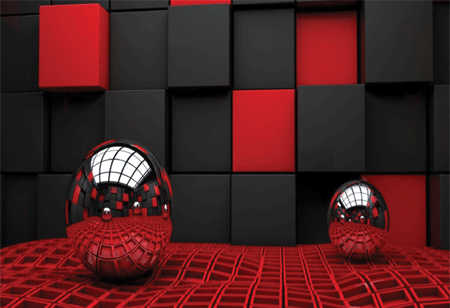
Introduction
A breath-taking painting by our own MF Hussain or by Michel Angelo has two dimensions. The length and width. The canvass doesn’t support the depth, but some of the paintings may give a perception of depth. And this perception of depth is different from the objects you see coming out of the screen in 3D movies. But why am I comparing movies and still pictures? Well, the movie, as the name implies, is nothing but a fast-moving string of nearly identical still
pictures projected on our eyes such that we perceive a continuously moving ‘movie’ if the speed is at least 16 pictures per seconds. They are called ‘Frames’ in Television parlance. Before further complicating the matter, we define here the objects and their dimensions.
Objects And Their Dimensions
An object is called a point, if the dimensions are very small. Like a Full stop dot ‘.’. But we know the modern day instruments are so powerful that this dot’s diameter is also measurable. All-pervading Coronavirus has a size of 120 to 140 nano meter (1 nano meter is 0.000 000 001 meter) with a shape of a disk or a kidney. And they have spikes which are 20 nm long. But these are huge compared to the electrons having a radius of 2.82x10-15 m (or 2.82 Femto meter-fm). So practically, nothing is dimensionless as such.
On the other hand, a line, or a series of closely placed dots, can be defined by the length or the distance. Hence it is unidimensional or 1D. Note that a line does have a finite width but for all practical purposes, it is ignored. So, the unit ‘meter’ with necessary prefix (like nano, micro, kilo, mega etc) is sufficient to describe a line. A square, on the other hand, has both length and width, thus giving an area. Meter squared (m2) is the unit and it is two Dimensional. A cube has length, width and height. It occupies a volume whose measure is Meter cube (m3).
As a part of the evolutionary process and front faced eyes, our brain tricks us into believing that we see distance or depth
A cube is drawn on a flat, 2D, paper or a computer screen like this:
Here, we can see three of six sides of the cube. Length, height and depth. This cube can be rotated on any axis. But can be moved sideways or up and down, not out of the screen. This is not a true 3D. Technically, it is called ‘Monoscopic 3D’, that is, a 3D object viewed with one of the eyes closed.
Depth is perceived by the brain when we see an object with both the eyes, that is Stereoscopic 3D. Our eyes are about 65mm apart. Hence an object about an arms length far, will be seen at different angles by each eye. Our brain processes this and gives us the perception of depth, or distance. Try seeing your index finger by stretching your arm and by closing one eye at a time and then see with both the eyes open. This is called stereopsis or the binocluer vision, and is one of the important cues our brain processes to give us the perception of depth.
Some of the other cues for the perception of distance are (1) Relative size of ratinal images. We know a person’s approximate height. Now based upon the image of that person formed on the ratina the brain will ‘tell us’ how far the person is. We do not consciously think about the size, but our brain has learnt to calculate automatically from image sizes, the distances of objects when the dimensions are known from its database created all these years!(2) Moving parallax method. Try this experiment.
You are reading this on a computer screen or on that of a mobile. Just adjust eyes such that you are able to see the back-ground wall or the tree also. Now move your head about an inch on either side. You will notice that the screen moves much faster than the background. This cue is processed by the brain and it determines that the screen is nearer to you than the background. (3) When very far distances are to be perceived, the strain on our eye muscles and pupil positions etc are calculated by our brain to give us a depth/distance perception.
In short, the depth we ‘see’ is actually the perception our brain has managed to give us by processing various cues. Though we are three dimensioned entities, each eye sees only
in two dimensions and as a part of the evolutionary process and front faced eyes, our brain tricks us into believing that we see distance or depth. Consider this. Most predators have stereoscopic vision with two frontal eyes to see how far the prey is. But the eyes of the prey are on the sides to get the maximum coverage of the surroundings. They will not have binocular vision to perceive depth.
It is the binocular vision, or the ability of each of our eyes to see at different angles and ability of the brain to process the two slightly differing images and give us the depth perception which has opened up the ‘virtual 3D’ space. Because, if, somehow, we trick each of our eyes to see an object with different angles, our brain has the capability to combine the images and produce a 3D image. But this is easier said than done. It requires another article of this size.
We use cookies to ensure you get the best experience on our website. Read more...